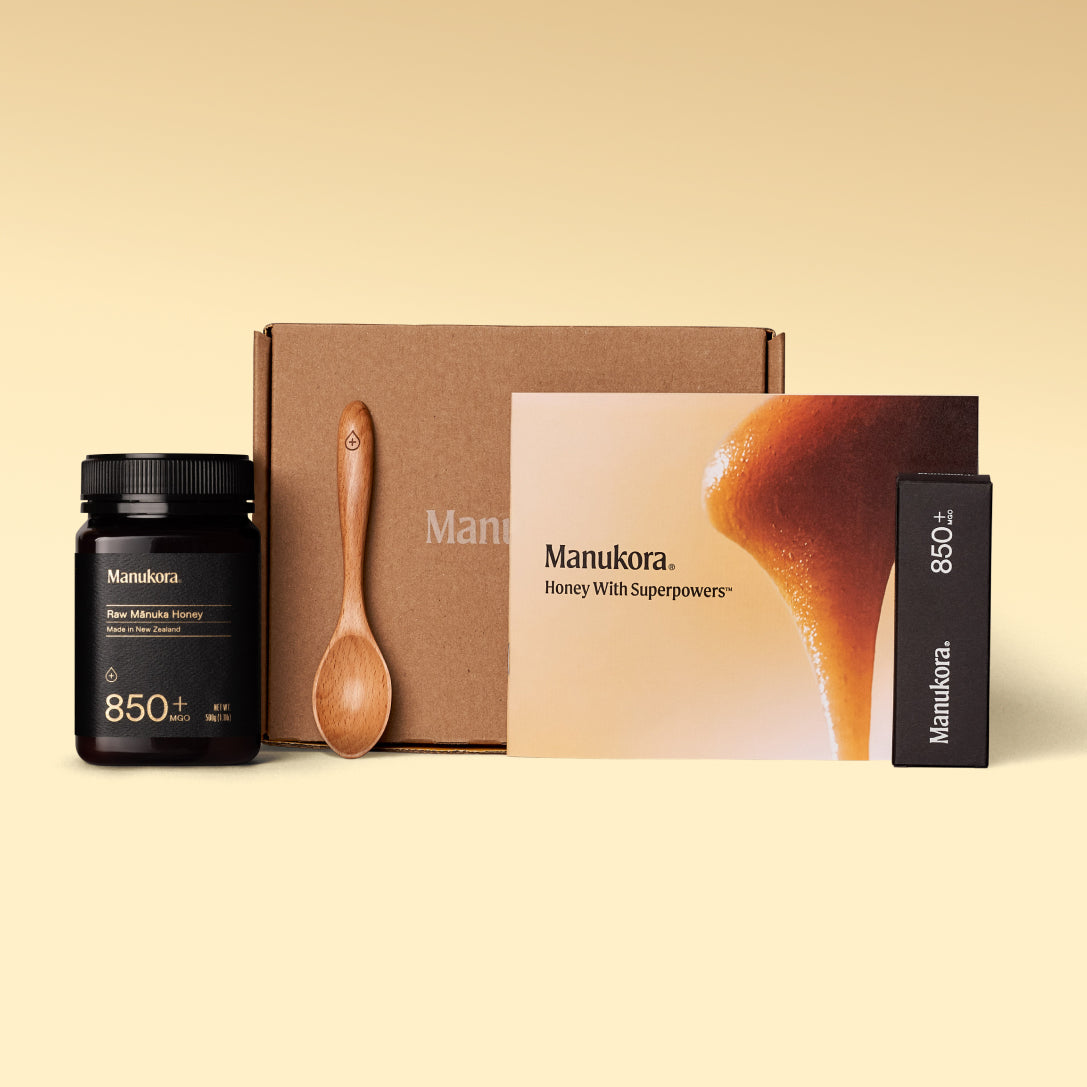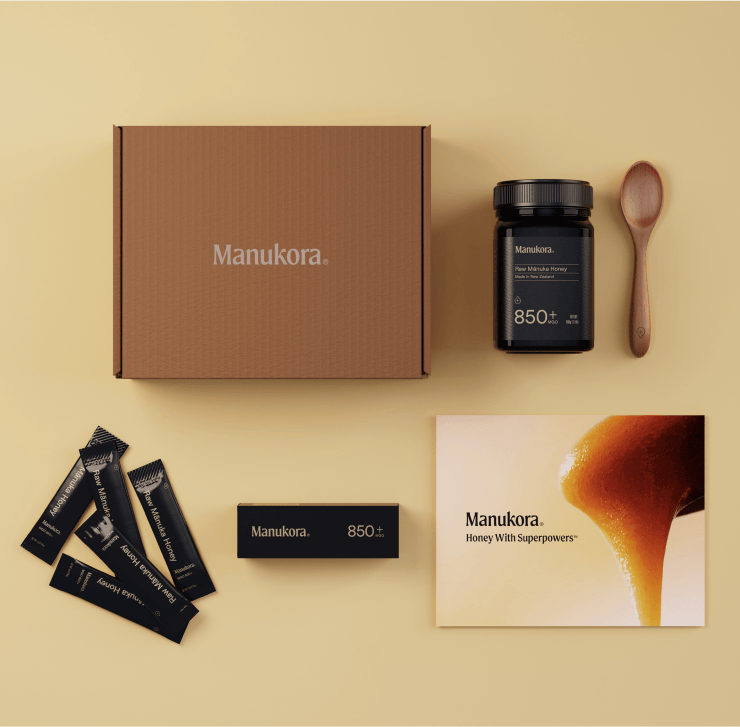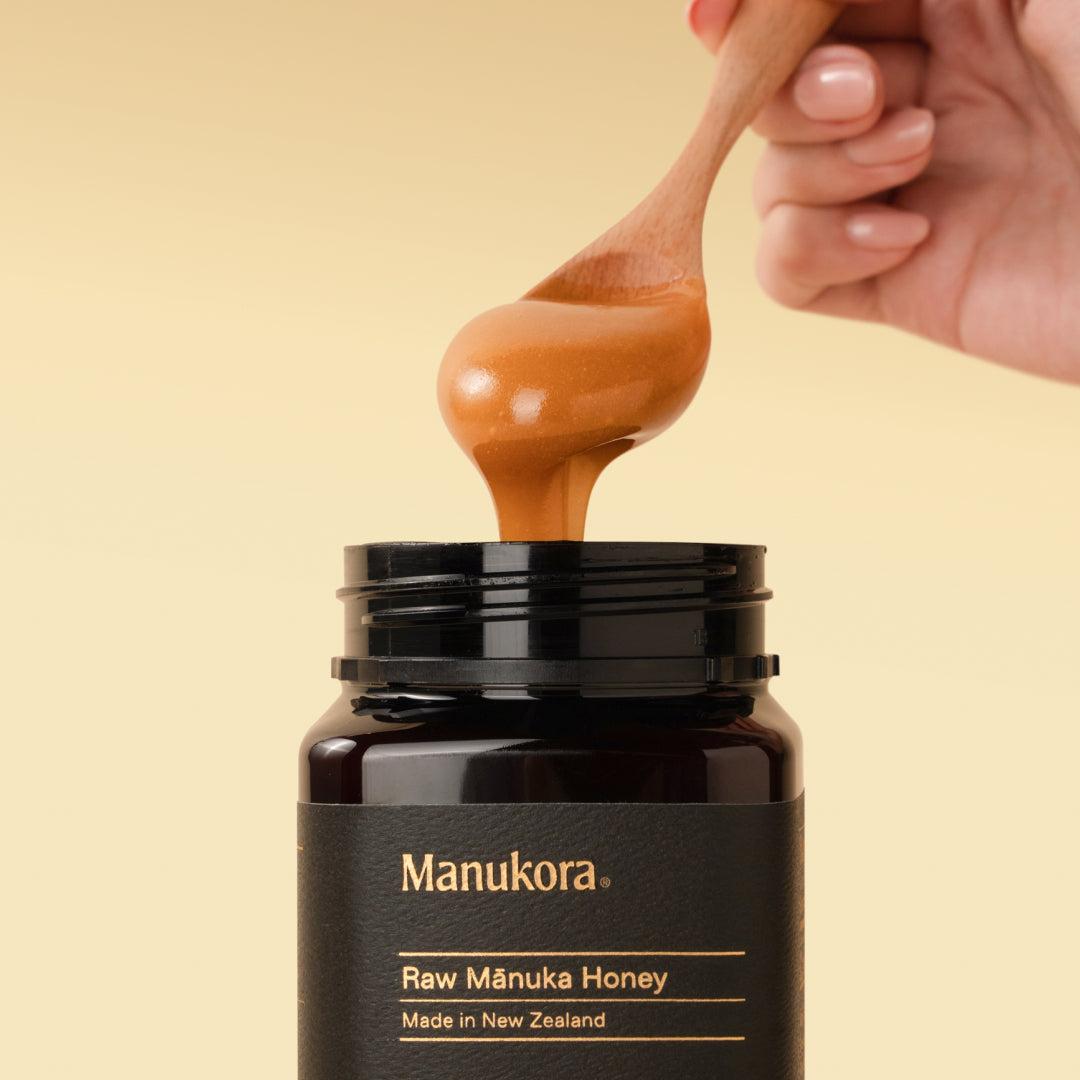Executive Summary
-
Honey varieties around the world are shaped by local plants, climates, and traditions each offering a unique flavor, texture, and cultural story.
-
Manuka, Acacia, Sidr, Clover, Eucalyptus, and Sourwood honeys all stand out for their origin, taste, and the flowers from which bees collect nectar.
-
Taste, aroma, and nutrient profiles vary by region. Manuka is bold and earthy, Acacia is light and floral, and Sourwood offers caramel-spice notes.
-
Manukora’s traceable Manuka honey from New Zealand offers a premium starting point for anyone looking to explore honey with care, character, and purpose.
Honey’s Global and Cultural Significance
Across the world, honey holds a special place in both nature and culture. From the remote Manuka tea tree forests of New Zealand to the ancient Sidr groves of the Middle East, each region’s honey tells a story of its land, its flowers, and its traditions.
For millions of years, honeybees have transformed nectar into golden sweetness which many call “liquid gold.” This natural gift has long been treasured: in ancient Egypt, honey was offered during sacred ceremonies; in medieval Germany, it was once used as currency. The Greeks celebrated it in honey cakes and candles, believing it symbolized both health and harmony.
Today, honey is still found in kitchens around the globe. Whether drizzled on food or enjoyed straight from the jar, it remains one of nature’s most versatile and culturally rich delights.
In this post, we’ll explore some of the world’s most iconic honey varieties, uncovering what makes each one distinct in flavor, origin, and experience.
Manuka Honey — New Zealand’s Liquid Gold
Manuka honey comes from the nectar of the native Manuka tea tree (Leptospermum scoparium), found in the remote, windswept regions of New Zealand’s North Island. This plant blooms for just a few weeks each year, making its honey not only rare but deeply tied to place and season.
With its thick texture, rich amber color, and smooth caramel flavor, Manuka honey offers a sensory experience unlike any other. Its distinctive taste reflects the land it comes from untouched forests, wild hillsides, and native flora.
What sets this honey apart even more is the presence of MGO (methylglyoxal), a naturally occurring compound that helps support microbial balance. Manuka honey also contains antioxidants and oligosaccharides, which contribute to overall wellness by supporting digestion and cellular health.
Its origin, flavor, and nutrient profile make Manuka honey a standout in the world of premium honey both for its taste and the care behind every jar.
Grown from a short seasonal bloom in New Zealand’s wild landscapes, Manuka honey captures the true essence of nature in each spoonful.
Acacia Honey: Europe’s Sweet Delight
Acacia honey is light in color and nearly clear, with a soft golden glow. Its gentle sweetness and mild floral scent make it a popular choice for those who prefer a lighter, more delicate taste.
This variety is produced from the nectar of the Black Locust tree (Robinia pseudoacacia), whose cascading white blossoms are especially abundant in parts of Europe. While the tree now grows in many regions, it was first introduced to Europe in the 17th century and has since become deeply rooted in areas like Hungary, Romania, and Bulgaria.
These regions are now among the top producers of Acacia honey, where traditional beekeeping meets ideal blooming conditions. The result is a honey that’s not only beautiful in taste and appearance but also plays a meaningful role in local economies.
Sidr Honey — A Middle Eastern Classic
In the dry desert landscapes of the Middle East, the Sidr tree has long been respected for its deep roots and golden blossoms. These yellow flowers produce Sidr honey, a rich and flavorful variety with deep cultural roots.
Often described as smooth and buttery, Sidr honey has a bold, caramel-like taste with hints of chocolate. Its flavor, color, and consistency make it a standout in the world of rare honeys.
This honey is especially prized in regions like Yemen, where some of the oldest Sidr trees still grow. Over centuries, Sidr honey has been part of tradition, trade, and cultural rituals making it more than just a sweetener, but a connection to history.
It is said that the branches of the Sidr tree were used as Jesus' crown at the time of his crucifixion.
Harvested from the ancient Sidr tree, this honey blends bold flavor with centuries of tradition.
Clover Honey — A North American Favorite
Clover honey is one of the most widely enjoyed varieties in North America. With its mild sweetness, light amber color, and soft floral aroma, it’s easy to see why it’s a staple in homes across the region.
This honey comes from the nectar of blooming clover plants, which grow abundantly across North American pastures. Its smooth, balanced taste makes it perfect for everything from drizzling on toast to stirring into tea or baking.
Loved for its versatility and familiar flavor, clover honey continues to be one of the most popular choices for everyday use.
Simple, sweet, and easy to love—clover honey is North America’s go-to for all things comforting and familiar.
Eucalyptus Honey: Australia’s Aromatic Treasure
In the warm, wild bushland of Australia, honeybees collect nectar from the blossoms of the native Eucalyptus tree. With hundreds of species across the region, Eucalyptus honey comes in many varieties each offering something slightly different.
This honey is known for its bold aroma and layered flavor. It’s often described as woody, slightly sweet, and full-bodied. Depending on which Eucalyptus tree the bees visit, the honey’s color and taste can vary. For example, nectar from the stringybark tree tends to produce darker honey with a strong, earthy flavor, while red gum blossoms yield a lighter, milder version.
Eucalyptus honey is also valued for its naturally occurring nutrients, including antioxidants and plant compounds that support general wellness. Its distinct scent and complex flavor make it one of the most recognizable honeys in the southern hemisphere.
From stringybark to red gum, Eucalyptus honey captures the wild essence of Australia in every jar.
Sourwood Honey: The Appalachian Gem
High in the forested slopes of the Appalachian Mountains, the Sourwood tree blooms briefly each summer, offering honeybees a rare and fragrant nectar source. Though the tree’s leaves are tart, the honey made from its white, bell-shaped blossoms is anything but.
Sourwood honey is known for its smooth, buttery texture and rich flavor with notes of caramel and subtle spice. Its light amber color and slow crystallization add to its charm, making it a prized variety among honey enthusiasts in the U.S. and beyond.
Because the Sourwood tree grows in limited regions and blooms for only a short time, this honey is both seasonal and special offering a taste of the mountains in every spoonful.
With notes of caramel and a hint of spice, Sourwood honey brings the quiet richness of the Appalachians to life.
The Global Journey of Honey
Every jar of honey tells the story of its origin, shaped by local trees, flowers, and landscapes. The nectar that bees collect from different plants gives each honey its own color, flavor, and nutrient profile.
From the wild Manuka forests of New Zealand to the clover fields of North America, these natural differences create a world of unique honey varieties to explore. Thanks to the incredible work of honeybees across the globe, we get to enjoy this rich diversity, each variety offering a taste of the land it came from.
Your Honey Quest
From the mountains of Appalachia to the wild forests of New Zealand, each honey variety carries its own story rooted in place, shaped by nature, and rich in culture. Exploring these global honeys isn’t just about taste; it’s about discovering the land, traditions, and care behind every jar.
Whether you're just beginning your journey or have already tasted a few of the world’s finest, there’s always more to explore. And if you're curious to try honey with a deeper story, Manukora is a beautiful place to start.
Crafted in New Zealand using The Art of Ethical Beekeeping, Manukora’s traceable Manuka honey combines flavor, quality, and care offering a true connection to nature.
Ready to try Honey With Superpowers™?
Explore our MGO 600+, 850+, or 1000+ Manuka honey collections today.
FAQs
What makes each type of honey taste different?
The flavor of honey depends on the nectar source meaning the types of flowers the bees visit. Different trees and plants give honey its unique color, aroma, and taste, which is why honey from New Zealand tastes different from honey in Europe or North America.
Why is Manuka honey considered more special than other types?
Manuka honey comes from the Manuka tea tree in New Zealand and is only harvested for a few weeks each year. It contains unique nutrients like MGO and is tested for quality and strength, making it rare and highly valued around the world.
How can I tell if a honey is raw and authentic?
Raw honey is typically unpasteurized and minimally filtered to keep its natural nutrients intact. Authentic varieties often list floral sources or regions, and premium brands like Manukora offer full traceability through QR codes and lab testing.
Are there health differences between global honey types?
Each honey type contains different natural compounds based on its floral source. While all honeys offer general support for wellness, some, like Manuka contain higher levels of specific nutrients that support things like gut balance or immune health.
Can I cook or bake with these specialty honeys?
Yes, but it’s best to avoid high heat. Heating can reduce the natural nutrients found in raw or premium honeys. Instead, use them in cooled foods, salad dressings, or drizzle them over your meals just before serving.
Sources
The Honey Association - History
Robinia pseudoacacia - EUFORGEN European forest genetic resources programme


















